People
Italian Sculptor Arturo Di Modica, Whose Charging Bull Sculpture Became a Symbol of an Unbridled Wall Street, Has Died at 80
The artist was working on major projects right up until his death.
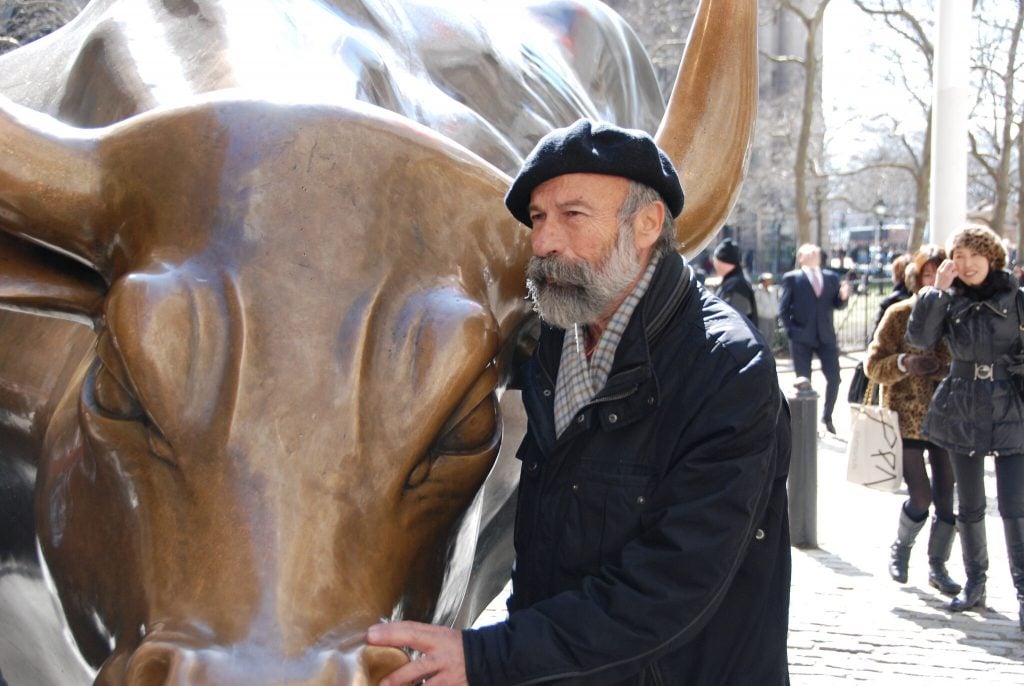
The artist was working on major projects right up until his death.

Italian sculptor Arturo Di Modica died Friday at home in Vittoria, Sicily. He was 80 years old, and had been sick with intestinal cancer in recent years.
If you don’t know Di Modica’s name, you almost certainly know his work—he is the man behind Charging Bull, the instantly recognizable symbol of Wall Street that has stood on New York’s Bowling Green since 1989.
“Everybody knows the bull—less well-known is Arturo’s name,” Jacob Harmer, managing director of London’s Geist Modern Contemporary, which began representing Di Modica in 2012, told Artnet News.
Signing with Geist marked the first time in the artist’s career that he’d had an official dealer. Fiercely independent, Di Modica was known for exhibiting his work on his own terms. As legend has it, he illegally dropped off the 3.5-ton Charging Bull beneath the New York Stock Exchange around 1 a.m. one December morning with a crew of 40 men, a crane, and and a truck. The statue stood beneath a newly installed Christmas tree like a larger-than-life present.
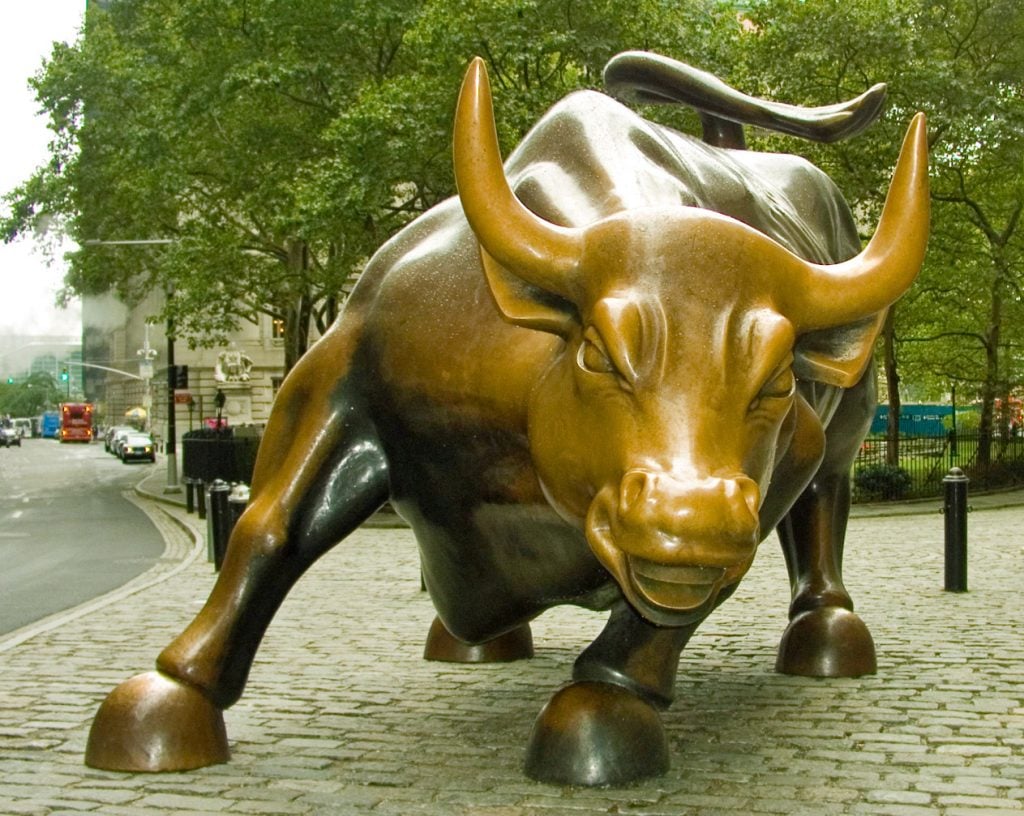
Arturo Di Modica, Charging Bull (1989). Photo courtesy of the artist.
“I firmly believe in the fullness of time Charging Bull will stand with the pyramids, Michelangelo’s David, the Eiffel Tower, [and] the Statue of Liberty as among the most iconic works of all time,” Arthur Piccolo, chairman of the Bowling Green Association and something of the guardian of the bull, told Artnet News.
Inspired by the 1987 financial crash, Di Modica spent two years and $350,000 to create the piece, which he hoped would embody American resiliency. It was his way of thanking the country where he found success in his craft.
“Arturo was the most determined and ambitious person I ever met,” Harmer said. “He would have an operation, and his doctor would tell him he had to rest—but he just wouldn’t. He’d get back up the next day, take a transatlantic flight from Italy to America, go straight to the foundry, and carry on working. He was going full force until the end.”
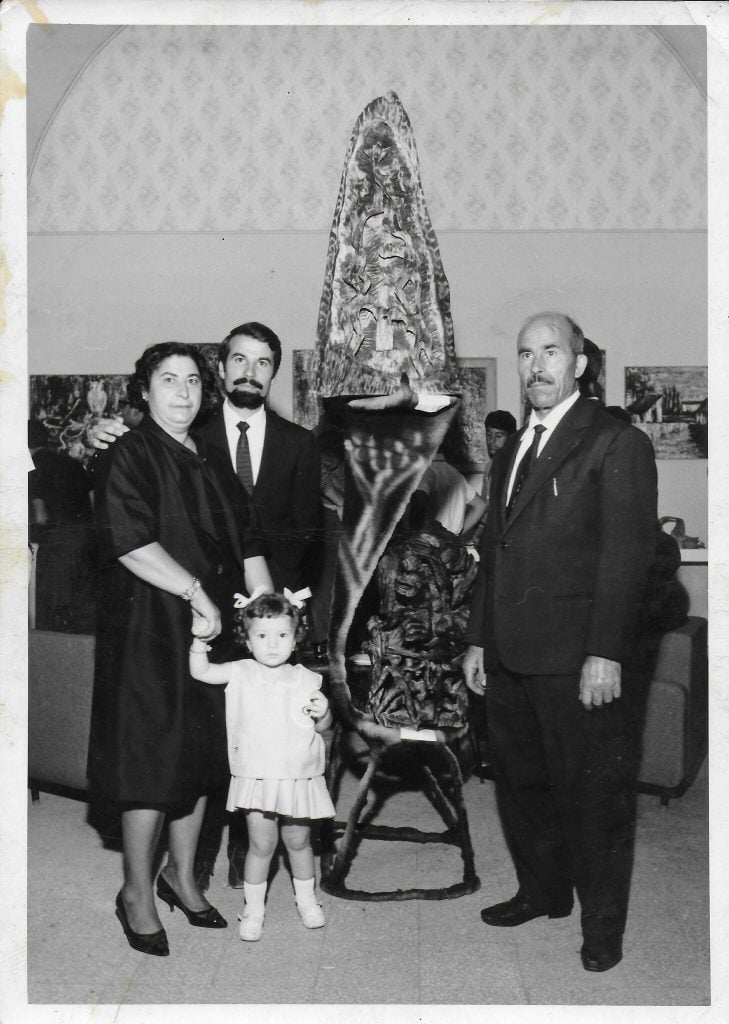
Arturo Di Modica, second from left, with his mother, niece, and father. Photo courtesy of the Arturo Di Modica Photo Archive
Born in Sicily, the artist moved to Florence at 18—in secret, he recounted in his biography, because his father never would have approved. As a student at the city’s Academy of Fine Arts, he built his own makeshift foundry because he didn’t have the money to pay existing facilities. Then, in 1966, the city flooded, destroying much of his work. Four years later, Di Modica moved to New York, where he crafted monumental sculptures on the sidewalk outside his SoHo studio.
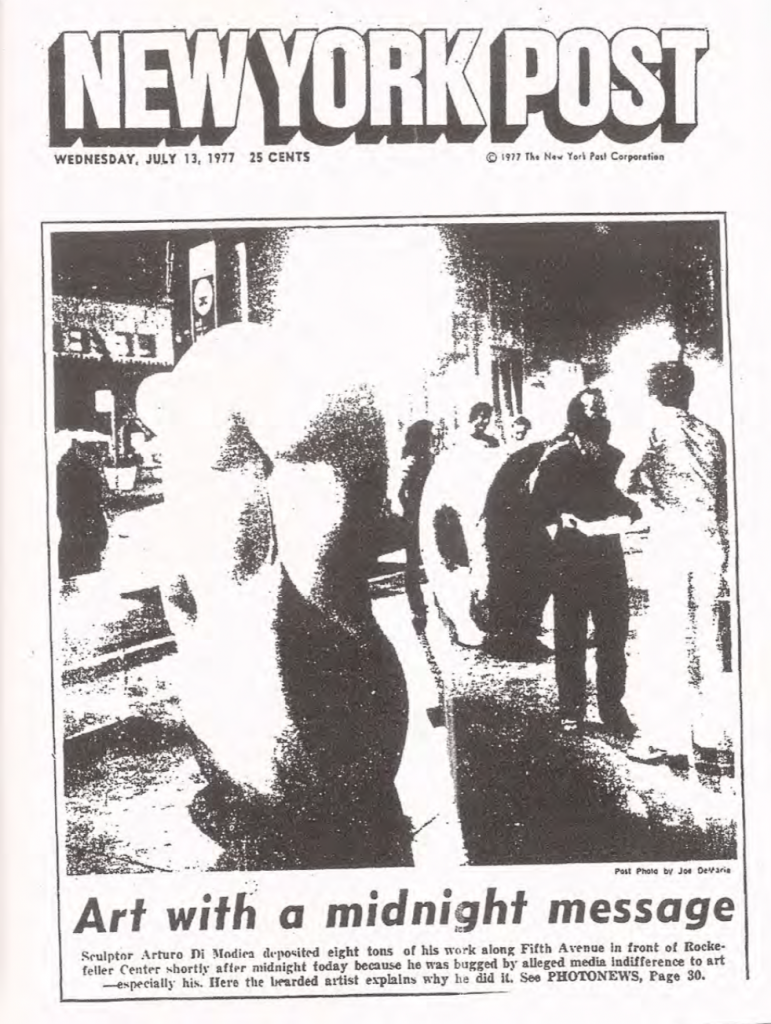
July 13th 1977, front page of the New York Post reporting Arturo Di Modica’s unauthorized installation at Rockefeller Center.
When critics ignored his debut show in the city, Di Modica fired back with his first guerrilla art stunt, unloading eight monumental pieces in front of Rockefeller Center. He narrowly avoided arrest, but made the front page of the New York Post. He began to establish the client base that would allow him to dine regularly at Cipriani, the downtown power lunch spot, and purchase a Ferrari 328 GTS.
But it was Charging Bull that really resonated with New Yorkers and became a permanent fixture of the city’s landscape. When the NYSE had the piece impounded—Di Modica paid $500 to get it back—the Parks Department stepped up to offer Charging Bull a home on Bowling Green, with Mayor Ed Koch’s blessing.
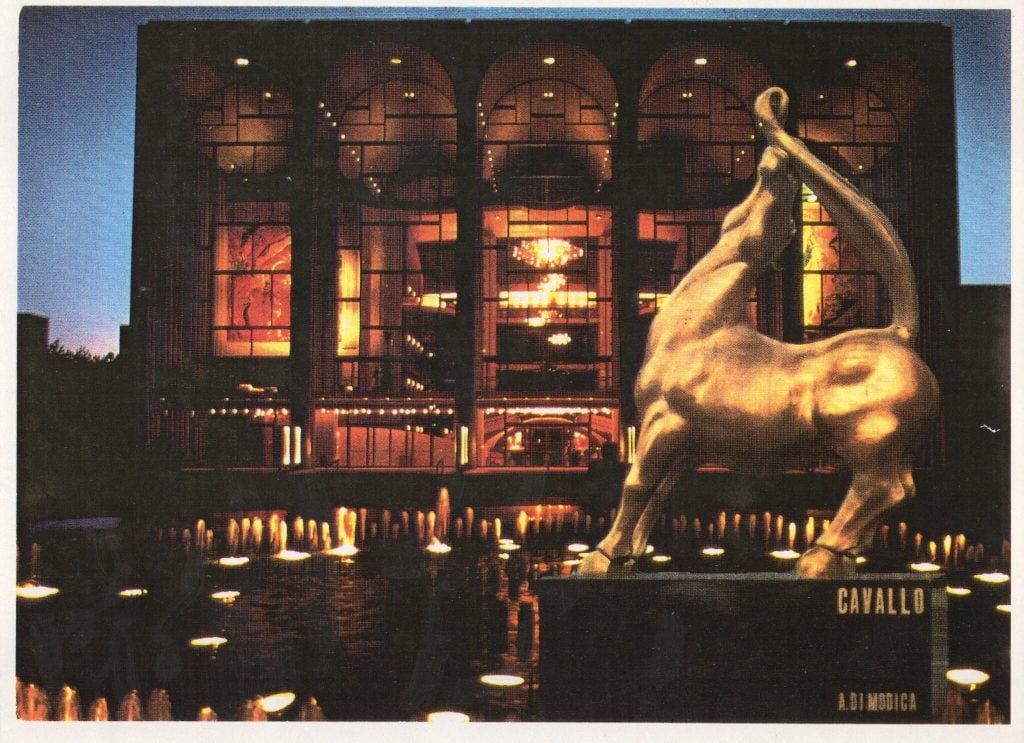
Arturo Di Modica, Il Cavallo illegally displayed on the plaza at Lincoln Center in New York on Valentine’s Day in 1985. Photo courtesy of the Arturo Di Modica Photo Archive
The piece was back in the headlines in 2017, when, in an International Women’s Day marketing stunt, financial firm State Street Global Advisors and advertising firm McCann commissioned artist Kristen Visbal to create Fearless Girl, a sculpture of a small girl facing down the bull.
The statue became an instant viral sensation. Di Modica controversially contended that the new piece of public art violated his copyright, and recast his beloved bull as well, a bully.
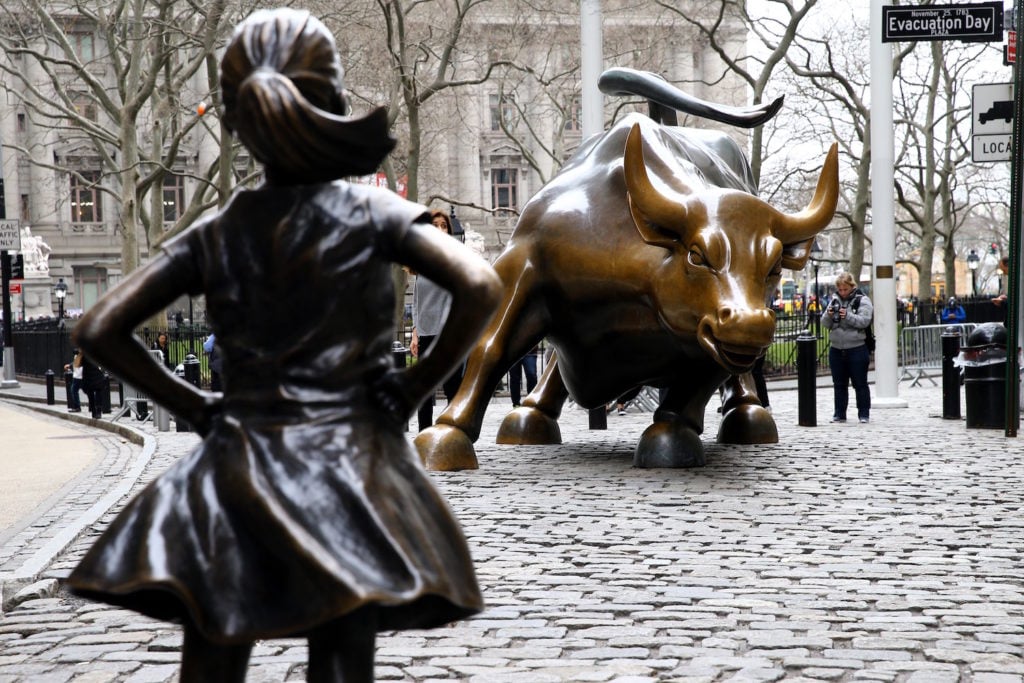
Kristen Visbal’s Fearless Girl, a four-foot statue of a young girl, defiantly looks up at Charging Bull in New York City. Courtesy of Volkan Furuncu/Anadolu Agency/Getty Images.
Fearless Girl has since been relocated to the New York Stock Exchange. Moving Charging Bull there as well has become something of an obsession of mayor Bill de Blasio—supposedly out of safety concerns—but following vocal opposition from Di Modica, the plan was rejected last year. (The artwork actually belongs to British investor Joe Lewis, who purchased it for an undisclosed amount—Di Modica’s original asking price was $5 million—on the condition that it remain at Bowling Green.)
Di Modica spent his final years on several major projects, including a secretive monument called Unfinished Journey that would have marked the 250th anniversary of the founding of the United States in 2026.
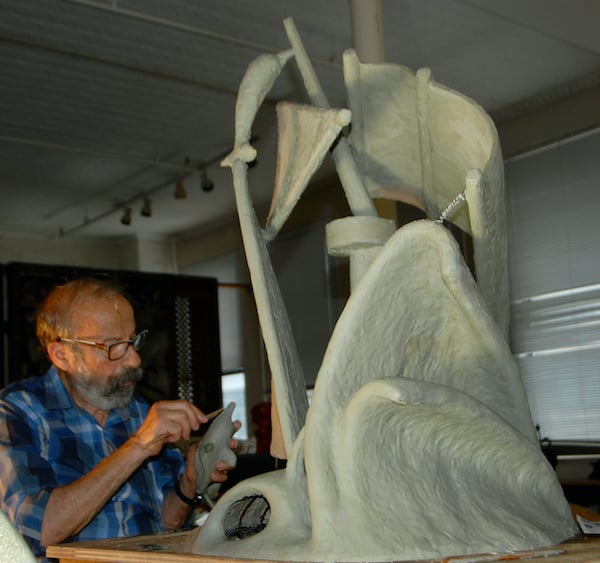
Arturo DiModica working on his unrealized Battery Park monument Unfinished Journey in his Church Street studio in 2016. Photo courtesy of Arthur Piccolo.
Built from stainless steel and bronze, the sculpture depicts “a sailing ship representing the very imperfect start to the American experience” and “the [continuing] quest for a more perfect union,” said Piccolo in an email campaign calling for the piece to be realized posthumously.
There were also plans to open an art school in Di Modica’s hometown of Vittoria called the Studio of the New Renaissance. The artist purchased a 13-acre property and also hoped to erect a 132-foot-tall sculpture of two rearing horses across the river.
“Arturo had been working on the monumental horses projects for decades, plowing in millions of dollars of his own money,” Harmer said. “I would like to see Arturo’s visions complete, but it is too early to tell what will happen next.”